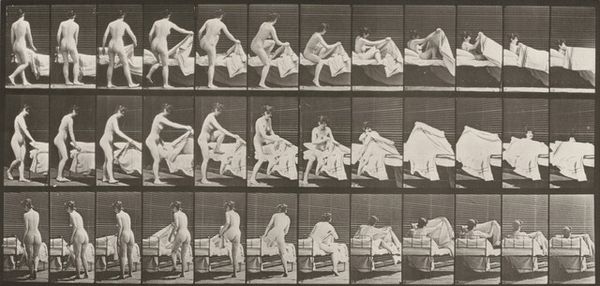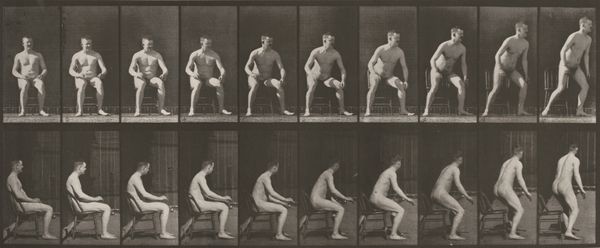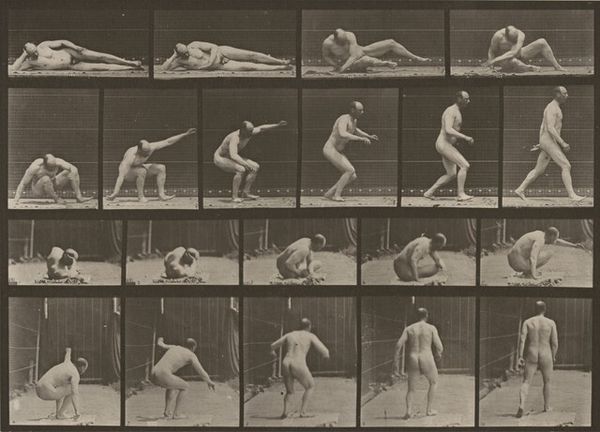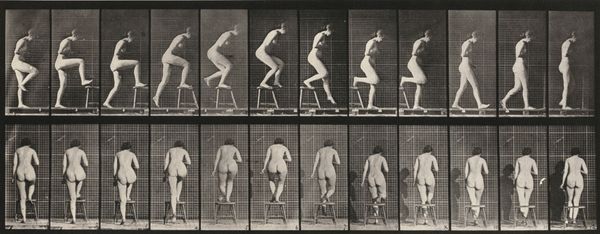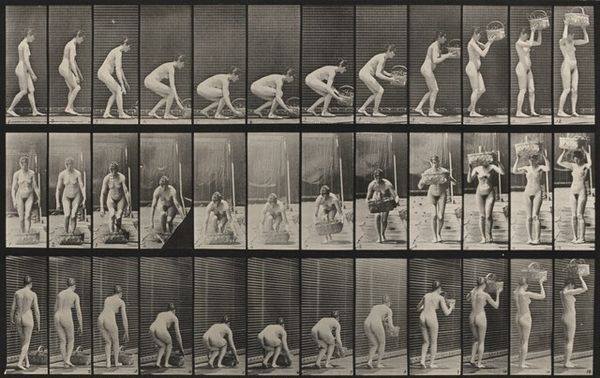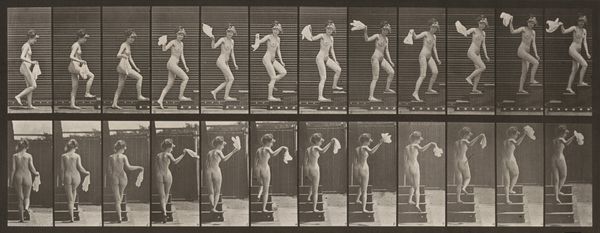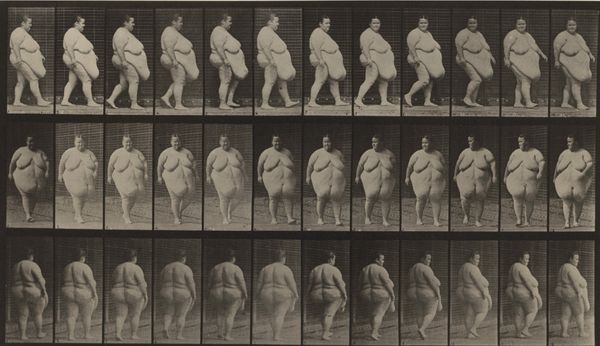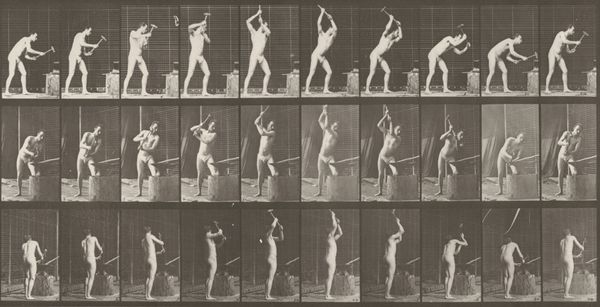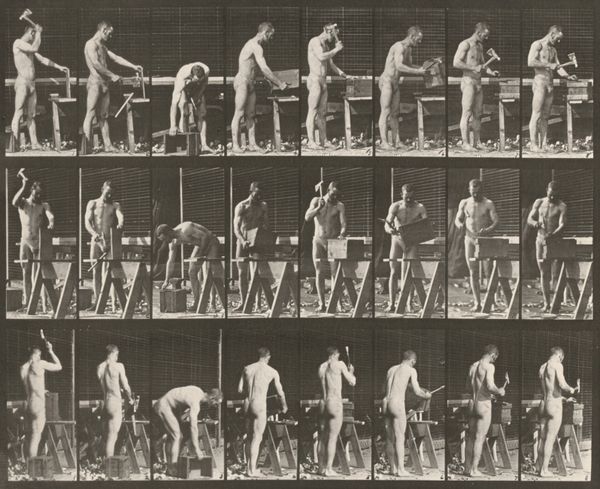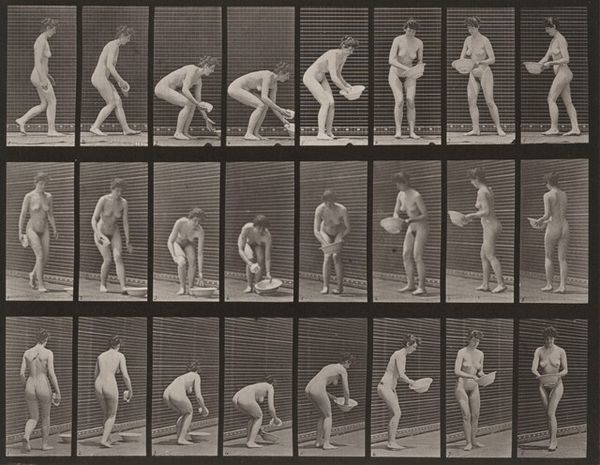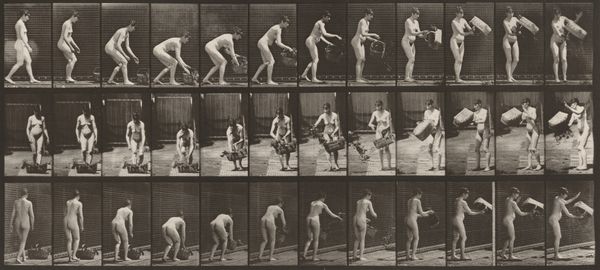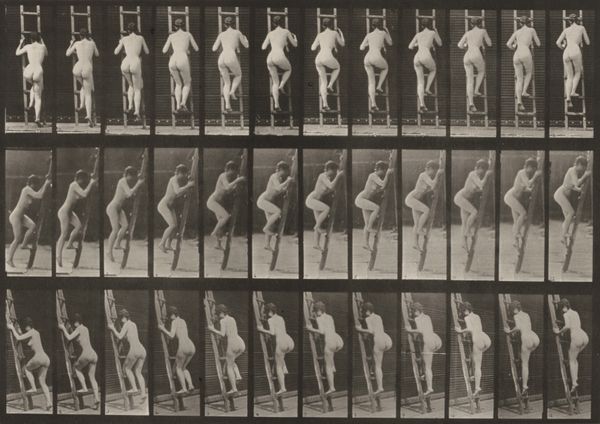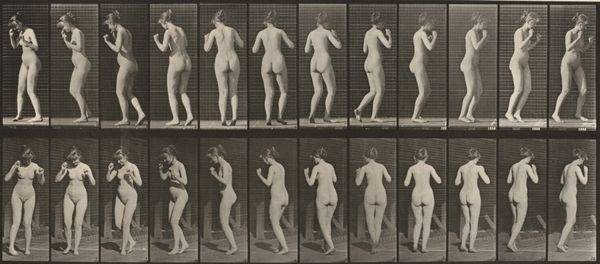
Plate Number 244. Sitting, crossing legs and filling a goblet from a pitcher 1887
0:00
0:00
print, photography, gelatin-silver-print
#
action-painting
#
portrait
# print
#
photography
#
gelatin-silver-print
#
nude
#
modernism
Dimensions: image: 22 × 33 cm (8 11/16 × 13 in.) sheet: 48.2 × 61.2 cm (19 × 24 1/8 in.)
Copyright: National Gallery of Art: CC0 1.0
Curator: This is Plate Number 244, a gelatin silver print from Eadweard Muybridge's *Animal Locomotion* series, created in 1887. Immediately, I see an interesting sequence in its gridded, staccato effect. Editor: The rhythmic nature feels mechanical yet sensuous. A study of movement, certainly, but the model's body also evokes Victorian anxieties surrounding women's roles and bodies as sites of labor, domesticity, and shifting social norms. Curator: Exactly. Note the grid formation: it isn’t arbitrary, it meticulously isolates and captures the model's action of sitting, pouring, and drinking. This breaks down the organic flow of movement into distinct units of measurement. It allows Muybridge to examine individual phases of actions, focusing on the lines, angles and volumes made by the human figure. Editor: Indeed. We need to recall Muybridge's broader project—analyzing movement—was driven by the emerging industrial logic. His time-motion studies of both animals and humans can be read as an attempt to quantify, and, implicitly, control organic bodies using photographic technology and modern, serial forms of analysis. The woman’s nudity renders her an objectified subject under that rationalizing, modernizing gaze. Curator: Agreed. The monochromatic tone strips away superficial color, directing attention instead to the formal elements—the repetition, contrast, and the geometry formed by the body’s interaction with the table and chair. What would you say this approach offers? Editor: It compels viewers to consider power structures. While the photographic precision initially appears objective, when juxtaposed with the sitter's bare body we observe her decontextualization, turning her into a scientific specimen that arguably reduces agency rather than honoring complexity. I’d argue, then, that while these photographs explore locomotion, they’re simultaneously capturing shifting, contradictory perspectives regarding the human body. Curator: It presents an aesthetic encounter rich in visual information and a striking portrait of its era’s intersection of science, artistic inquiry and societal standards. Editor: These composite photos serve not just as an atlas of physical movement but as historical mirrors, challenging us to see how perspectives on the human body transform—or stagnate—across time.
Comments
No comments
Be the first to comment and join the conversation on the ultimate creative platform.

